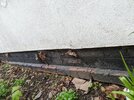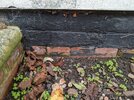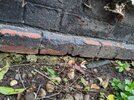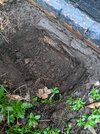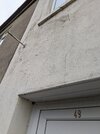I’m considering purchasing a Victorian terrace house that has been rendered as shown in the attached photo. The survey has highlighted an issue that sounds expensive to resolve.
It states:
I’m afraid I don’t currently have a photo of the damage.
As it’s the Easter holidays I can’t speak to the surveyor (or a building expert) for a few days, so I just wondered if anyone would be able to give me a very rough idea of how much a job like this would normally cost (in the UK)?
Many thanks in advance.

It states:
Support for the bottom course of visible brick is badly eroded at ground level on the front elevation due to frost damage. Cutting out and replacing the stone/ bricks may be at some expense as it is labour intensive. Engineering bricks would help prevent this problem reoccurring.
I’m afraid I don’t currently have a photo of the damage.
As it’s the Easter holidays I can’t speak to the surveyor (or a building expert) for a few days, so I just wondered if anyone would be able to give me a very rough idea of how much a job like this would normally cost (in the UK)?
Many thanks in advance.


